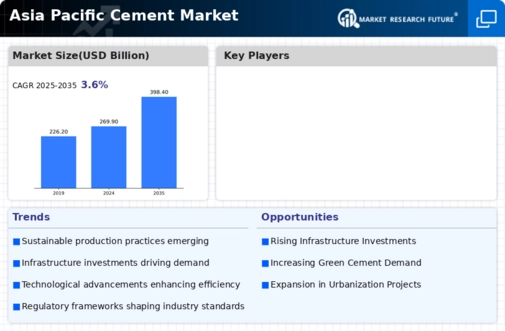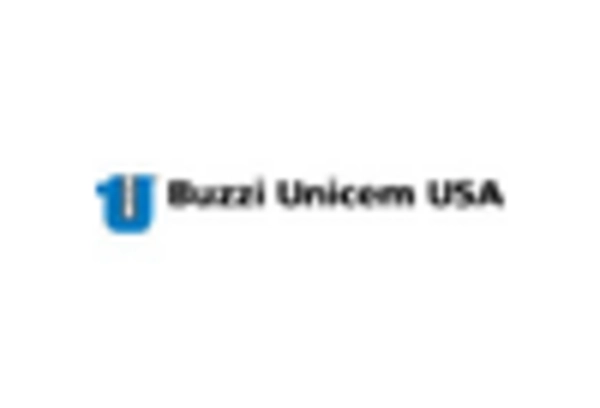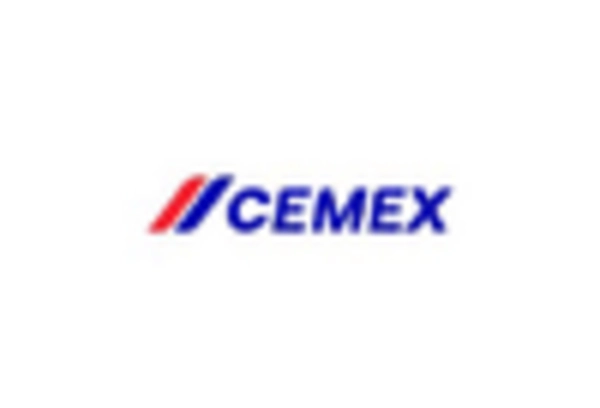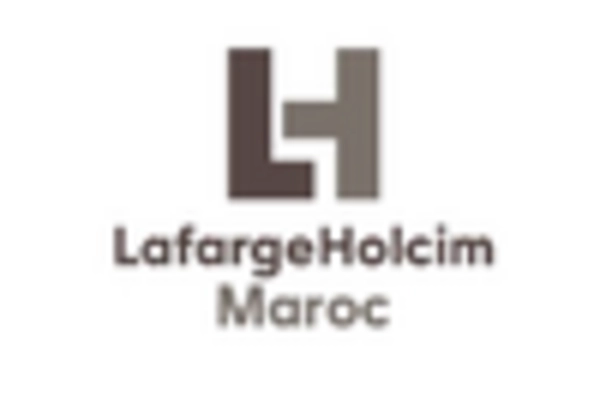Market Analysis
In-depth Analysis of Asia Pacific Cement Market Industry Landscape
The cement market in the Asia Pacific region has recently been identified as a market with a dynamic and shaping process due to the factors of the economy, demography and environment that are constantly changing. By considering both the internal and external factors which can drive industry, the dynamics of the market becomes one of the most important factors in the region.
Economically, Asia - Pacific region is experienced rapid growth in cities and industries that require a huge infrastructure service and construction. The need for cement can we may concert for this portion of the market as the cement is used as a main constituent for erection of buildings, roads, bridges, and other areas of infrastructure. He population is increased in the same trend and the middle depths in countries like as China and India, just gave a support to constructing and thus to the dynamics which are between to be strong.
The Asia Pacific cement industry can have a decided impact on the business processes and on the government policies and regulations sector. Lots of states on this continent carry out programs to push the environmentally sustainable and green construction enhancement trend in constructions, and consequently the focus has shifted to ecological cement products. This has even empowered innovation among the factory owners as they keep on researching and developing cement with very little carbon footprints coupled to increased environmental protection and sustainable development.
Beyond that, global trends in the cement market for Asia-Pacific region, such as uneven prices for raw materials, swings in inter-state treaty terms, and the latest technology are at play especially. Asia Pacific region is one of the largest and most prominent players in the global cement trade, and any recent change in the outside environment will naturally affect the cement business environment of the Asia Pacific region to a considerable degree. The global nature of this interdependence renders the market prone to external shocks and conducting a business in such industry requires all the players to be quick to adapt.
As in the Asia Pacific cement industry there is rivalry that is being shaped by the presence of international giants and some local and regional businesses. Competition is stiff, in line with production capacity, quality of service, pricing, and networks of distribution that touch upon it. While companies are continuously looking for connection trumps through mergers and acquisitions, partnerships or development within technology barely the next day.
With environmental issues having an impact on market dynamics in Asia Pacific cement industry, this issue becomes a big part of the industries operations now and for the future as well. Nowadays, carbon is focal point in sustainability. Companies are evaluating new raw materials and manufacturing processes that lower down carbon emissions. The augmentation of filling population for green and eco-resolved construction stills going on that triggers the selection of alternative cement products. As a result, such (changing preferences of consumers) is a driving force for manufacturers to formulate a strategy that fits environment goals. This, consequently, is a factor affecting overall market dynamics.

















Leave a Comment